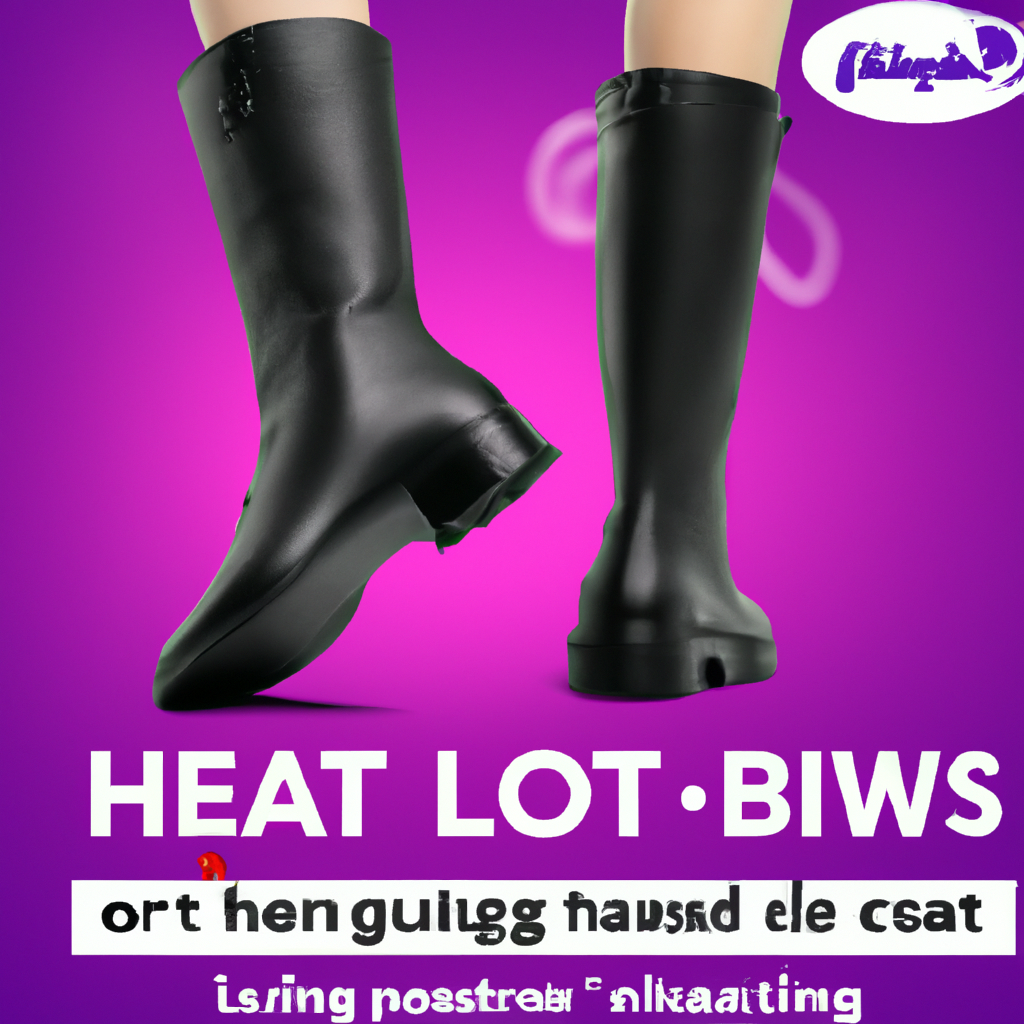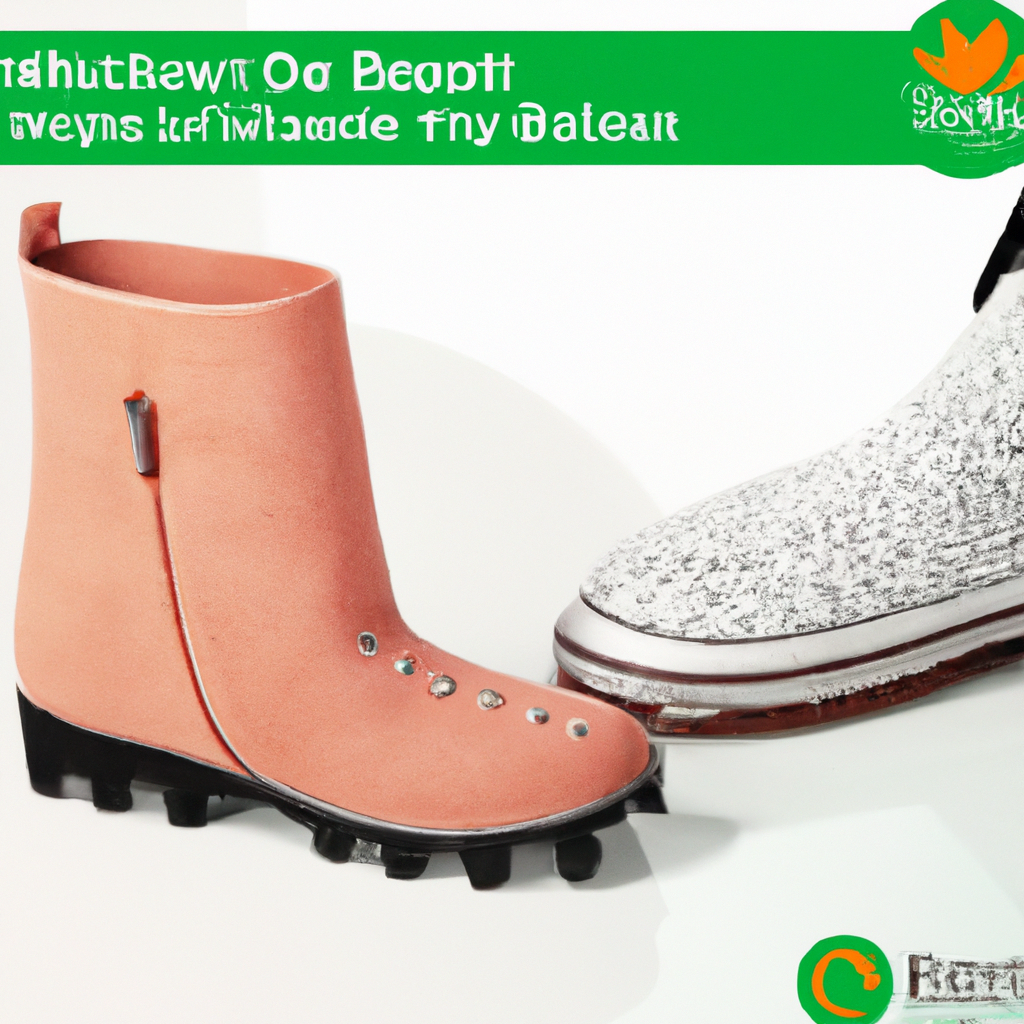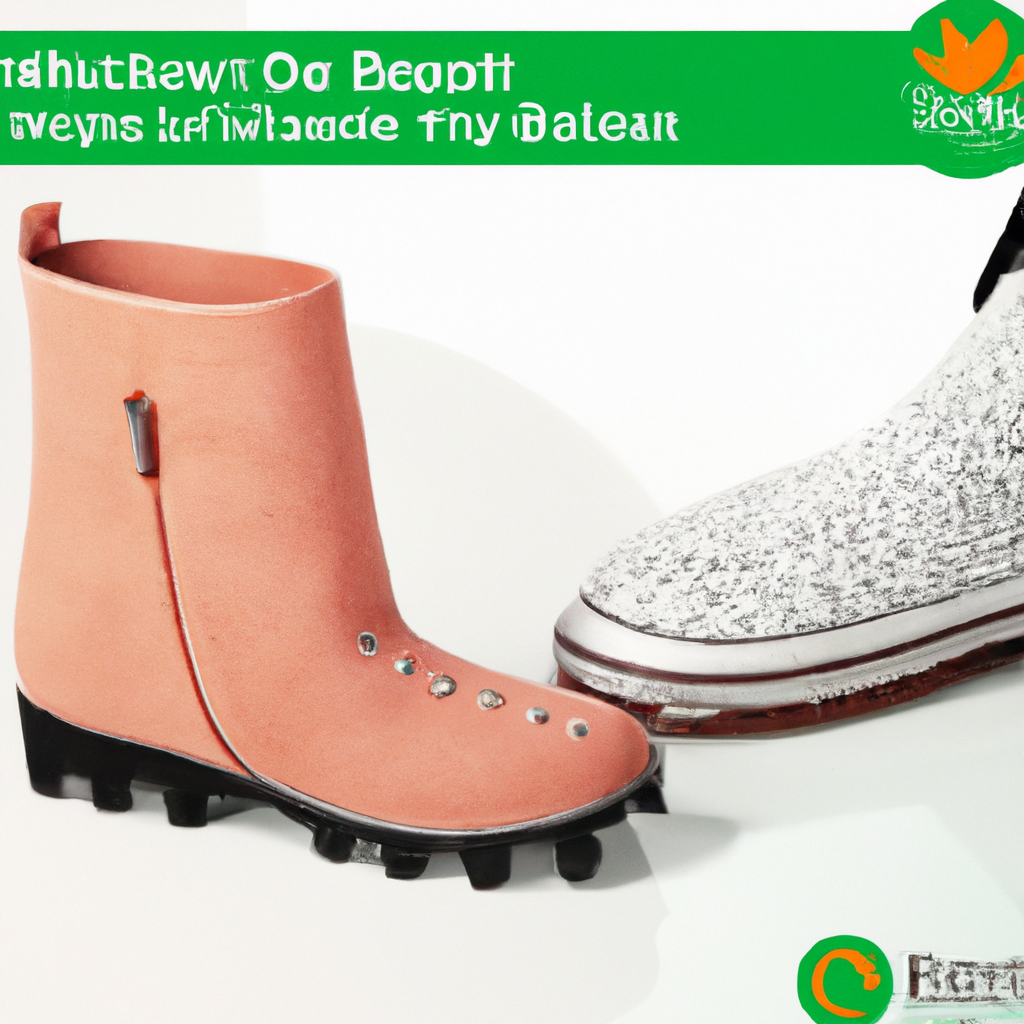Imagine this scenario: you’re excitedly unpacking a brand new pair of boots, eagerly anticipating the perfect fit and comfort they will provide. But as you slip them on, you’re met with a tight and unforgiving squeeze. The disappointment is palpable. Luckily, there is hope. In this article, we’ll explore the fascinating way that heat can work wonders in helping you break in those stubborn boots, enabling you to strut in style and utmost comfort. So, if you’ve been longing for boots that feel like an extension of your feet, keep reading to uncover the secret behind this surprising solution.
The Importance of Breaking in Boots
Why is it important to break in boots?
Breaking in boots is an essential step in ensuring optimal comfort and functionality. When you first purchase a pair of boots, they may feel stiff, tight, and uncomfortable. By breaking them in, you allow the boots to mold to the shape of your feet, making them more comfortable to wear for extended periods. It also helps to prevent blisters, chafing, and other foot-related discomforts that can arise from wearing new, unbroken boots.
What are the benefits of breaking in boots?
The benefits of breaking in boots go beyond mere comfort. When you break in your boots properly, you allow the materials to stretch and adjust to your feet, resulting in a customized fit. This personalized fit provides better support to your feet, ankles, and lower legs, helping to prevent fatigue and reducing the risk of foot and leg injuries. Additionally, breaking in your boots can help improve your overall mobility and stability while wearing them.
What can happen if you don’t break in your boots?
If you choose not to break in your boots, you may experience a range of discomfort and potential issues. The boots may continue to feel tight and restrictive, causing pain and irritation to your feet. This can lead to blisters, corns, calluses, and even more serious foot problems such as bunions. Additionally, wearing new boots without breaking them in may impede your mobility and affect your balance, making it challenging to perform tasks that require agility or stability.
Understanding Boot Material
Different types of boot materials
Boots come in various materials, each with its own characteristics and properties. Common boot materials include leather, suede, synthetic fabrics, and rubber. Leather is a popular choice for its durability, flexibility, and breathability. Suede offers a softer and more luxurious feel. Synthetic fabrics like nylon and polyester are often used in hiking or athletic boots for their lightweight and quick-drying nature. Rubber is commonly found in rain boots or work boots for its waterproof and slip-resistant attributes.
How do materials affect the break-in process?
The material of your boots can significantly impact the break-in process. Leather boots, for example, tend to require more break-in time compared to synthetic or fabric boots. Leather is a natural material that becomes more flexible over time, conforming to the shape of your feet. Synthetic materials and fabrics, on the other hand, may have less rigidity, allowing for easier movement and less break-in time. Understanding the material of your boots helps you gauge what to expect during the break-in period and adjust your approach accordingly.

Heat as a Break-in Method
How heat can aid in breaking in boots
Using heat as a break-in method can expedite the process of softening and stretching the materials of your boots. Heat helps to relax the fibers, making them more pliable and easier to mold to the shape of your feet. By applying heat, you can accelerate the break-in process and achieve a more customized fit sooner. However, it is crucial to use heat cautiously and in moderation to avoid damaging the boots.
Recommended heat sources for boot break-in
When using heat to break in your boots, it is important to choose the right heat source. Two commonly used heat sources are a hairdryer and a heat gun. A hairdryer is a convenient option as most people have one readily available at home. However, if you are dealing with stubborn or extremely stiff boots, a heat gun may provide more intense heat and faster results. Whichever heat source you choose, make sure to practice caution and follow the instructions carefully.
Precautions to take when using heat for break-in
While heat can be effective for breaking in boots, it is crucial to take precautions to prevent damage. Here are some important precautions to keep in mind:
-
Avoid overheating: It’s important not to expose your boots to excessive heat for an extended period. This can cause the materials to become brittle or even melt, resulting in irreversible damage.
-
Test the heat source: Before applying heat directly to your boots, test the heat source on a small, inconspicuous area to ensure it does not cause any adverse effects on the material.
-
Maintain a safe distance: When using a heat gun or hairdryer, maintain a safe distance between the heat source and the boots to prevent scorching or burning. Follow the manufacturer’s instructions for the recommended distance.
-
Monitor temperature and time: Regularly check the temperature of your boots to ensure they do not become too hot. Limit the duration of heat application to prevent excessive softening or stretching.
Using a Hairdryer or Heat Gun
Step-by-step guide to using a hairdryer or heat gun
When using a hairdryer or heat gun for breaking in your boots, follow these step-by-step instructions:
-
Put on a pair of thick socks: Wearing thick socks will protect your feet from excessive heat and prevent discomfort.
-
Set the heat source to a medium temperature: Start with a moderate heat setting to avoid overheating the boots.
-
Hold the heat source at a safe distance: Maintain a distance of 6 to 8 inches between the heat source and the boots. Move the heat source constantly to distribute the heat evenly.
-
Apply heat to the entire boot surface: Move the heat source back and forth, covering the entire boot surface. Pay special attention to areas that feel tight or require more stretching.
-
Wear the boots while warm: Once you have applied heat to the boots, put them on your feet while they are still warm. The warmth will help the boots mold to the shape of your feet more effectively.
-
Walk around with the boots: While wearing the warm boots, walk around for a few minutes to allow the materials to cool and set in the desired shape.
Applying heat to specific areas for targeted stretching
If certain areas of your boots are causing discomfort or need more stretching, you can target them specifically with heat. Use a hairdryer or heat gun to apply heat directly to those areas. By concentrating the heat on specific spots, you can soften the materials and stretch them more effectively. Remember to maintain a safe distance and monitor the temperature to avoid overheating or damaging the boots.
Duration and frequency of heat application
The duration and frequency of heat application may vary depending on the type and condition of your boots. As a general guideline, start with short bursts of heat, such as 20-30 seconds, and gradually increase the duration if needed. It is important to monitor the temperature carefully, ensuring that the boots do not become overly hot. Repeat the heat application process as necessary until you achieve the desired level of comfort and flexibility.

Heat vs Natural Break-in
Pros and cons of using heat vs natural break-in
Both heat and natural break-in methods have their own advantages and disadvantages. Here are the pros and cons of each:
Heat Break-in:
- Pros:
- Accelerates the break-in process.
- Allows for targeted stretching in specific areas.
- Can be particularly helpful for stubborn or stiff boots.
- Cons:
- Requires caution to avoid overheating and damaging the boots.
- May reduce the longevity of the boots if not used correctly.
Natural Break-in:
- Pros:
- Allows the materials to gradually mold to the shape of your feet.
- Generally safer for the longevity of the boots.
- Cons:
- Takes longer to achieve optimal comfort.
- May require enduring some discomfort during the break-in period.
When should heat be used?
Using heat for boot break-in is recommended when you are dealing with particularly stiff or resistant materials. If you have limited time or need to get your boots comfortable quickly, heat can be a valuable tool. It allows you to expedite the break-in process without compromising the overall quality of the boots. Heat is especially beneficial if you need to focus on specific areas for stretching or customization.
When is natural break-in a better option?
Natural break-in is often preferred when time is not a constraint, and you want to ensure the longevity of your boots. Some individuals prefer the gradual molding process that occurs naturally as the boots conform to their feet over time. Natural break-in methods, such as wearing thick socks and walking around, allow for a gentler and more measured approach to achieving a personalized fit. Natural break-in is also a suitable option for boots made from delicate or sensitive materials that may be susceptible to damage from heat.
Other Methods for Breaking in Boots
Wearing thick socks
One simple method for breaking in boots is wearing thick socks while wearing them. Choose socks with a slightly more generous fit to create extra space inside the boots, allowing for better air circulation and increased flexibility. Thick socks also provide a cushioning effect, minimizing friction and reducing the risk of blisters. Wear the boots with thick socks for extended periods to help stretch the materials and gradually mold them to the shape of your feet.
Using boot stretchers
Boot stretchers are helpful tools for breaking in boots, particularly if you need to stretch them in specific areas. These devices can be inserted into the boots to apply gentle pressure and expand the materials. To use a boot stretcher, follow the manufacturer’s instructions. Typically, you would adjust the stretcher to the desired width or length and leave it inside the boots for a few hours or overnight. Repeat the process as needed until you achieve the desired fit.
Applying leather conditioners
Leather conditioning products can aid in softening and moisturizing the leather, making it more pliable and responsive to molding. Apply a leather conditioner according to the manufacturer’s instructions, ensuring even coverage on the entire boot surface. Conditioning the leather regularly helps maintain its integrity and prevents it from becoming dry, stiff, or prone to cracking. Soft, supple leather is more conducive to the break-in process, allowing the boots to mold to your feet more comfortably.
Walking around the house
A simple yet effective method for breaking in boots is to wear them indoors and walk around the house. This allows you to gradually get accustomed to the boots and allows the materials to flex and adjust to your movements. Start by wearing the boots for short periods, gradually increasing the duration as they become more comfortable. Walking around the house helps identify any areas that require additional stretching or adjustment, allowing you to target those spots for further break-in efforts.
Avoiding Common Break-in Mistakes
Rushing the break-in process
One of the most common mistakes when breaking in boots is rushing the process. While it can be tempting to speed up the break-in period, forcing the boots to fit quickly may result in discomfort, blisters, or damage to the boots. Take the time to properly break in your boots, allowing the materials to adjust gradually. Putting in the effort and patience will result in a more comfortable and durable fit.
Overheating the boots
When using heat to break in your boots, it’s important to exercise caution and avoid overheating. Excessive heat can damage the materials, causing them to become brittle, warp, or even melt. Always monitor the temperature and apply heat in short bursts, gradually increasing duration if necessary. Avoid prolonged exposure to high heat levels and choose the appropriate heat source for your boots.
Neglecting to moisturize leather
If you have leather boots, neglecting to moisturize the leather can hinder the break-in process. Leather that lacks moisture tends to become dry, stiff, and resistant to stretching. Regularly applying a leather conditioner or moisturizer helps keep the leather supple and more receptive to molding. Neglecting this step may prolong the break-in period and increase the risk of damage to the leather.
Not wearing the boots enough
To achieve optimal results when breaking in your boots, it is important to wear them regularly. Merely applying heat or using other break-in methods sporadically may yield limited results. Wearing the boots for extended periods, especially during activities that simulate the typical use of the boots, helps the materials adjust and conform to your feet more effectively. The more you wear the boots, the quicker and more comfortable the break-in process will be.
Caring for Your Boots After Break-in
Cleaning and conditioning
After successfully breaking in your boots, it is essential to maintain their cleanliness and condition. Regular cleaning helps remove dirt, debris, and stains that can gradually accumulate and potentially degrade the materials. Use a soft brush or cloth to remove surface dirt and apply a leather cleaner or conditioner to maintain the leather’s integrity. Follow the specific care instructions provided by the boot manufacturer for the best results.
Storage tips
Proper storage is crucial for preserving the condition and longevity of your boots. Keep them in a cool, dry place away from direct sunlight, as exposure to heat and sunlight can cause the materials to degrade or discolor. Avoid storing your boots in plastic bags or airtight containers, as this can trap moisture and lead to mold or mildew growth. Stuff the boots with acid-free tissue paper or boot shapers to help maintain their shape while in storage.
Maintaining the shape
To preserve the shape of your boots after breaking them in, there are a few simple tricks you can employ. Stuff the boots with rolled-up newspaper or boot shapers to help them hold their form. This prevents the boots from developing creases or becoming misshapen over time. If your boots have a tendency to slouch or lose their structure, consider investing in boot supports specifically designed to keep them upright.
Professional Help for Stubborn Boots
When should you seek professional assistance?
In some cases, breaking in stubborn or difficult boots can be challenging even with various methods. If you have tried multiple techniques without success or if your boots require significant adjustments, it may be time to seek professional assistance. Professional cobblers or boot repair specialists have the expertise, tools, and experience to stretch, reshape, or modify boots to fit your unique foot shape and size.
Repair and stretching services
Professional cobblers offer a range of repair and stretching services to help make your boots more comfortable and well-fitting. These services can include stretching specific areas, widening or lengthening the boots, or even reshaping them entirely. A cobbler can assess your boots and recommend the most appropriate method to achieve your desired fit and comfort level.
Costs and considerations
The cost of professional boot services varies depending on the complexity of the adjustments required and the expertise of the cobbler. Before proceeding with any services, it is advisable to consult with the cobbler and obtain a detailed estimate of the costs involved. Consider the value of your boots, the extent of the adjustments needed, and the potential longevity of the boots after the modifications. Balancing the cost and benefits will help you make an informed decision about seeking professional assistance.
Conclusion
Final thoughts on using heat for boot break-in
Breaking in boots is an essential step in ensuring comfort, functionality, and longevity. While natural break-in methods are effective, using heat can expedite the process and provide a more customized fit sooner. By employing heat sources such as a hairdryer or heat gun, you can soften the materials and facilitate targeted stretching. However, it is crucial to exercise caution, follow proper techniques, and avoid overheating to prevent damage to the boots.
Considerations for personal preferences
It is important to consider your personal preferences and circumstances when choosing a break-in method. Some individuals may prefer the gradual, natural break-in process, while others may opt for quicker results using heat or alternative methods. Assess your needs, time constraints, and comfort level when deciding on the most suitable break-in method for your boots.
Balancing break-in methods with boot longevity
Lastly, it is crucial to strike a balance between effective break-in methods and the long-term integrity of your boots. While heat can expedite the break-in process, excessive use or incorrect application may reduce the overall lifespan of your boots. Evaluate the materials, condition, and value of your boots when deciding on the most appropriate break-in approach. By caring for your boots diligently after the break-in process, you can ensure their longevity and enjoy their comfort and functionality for years to come.




